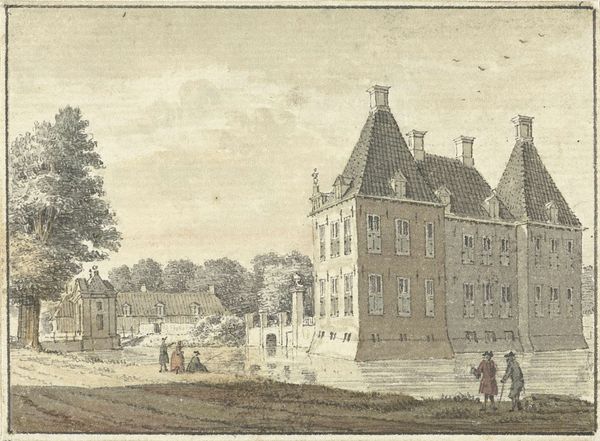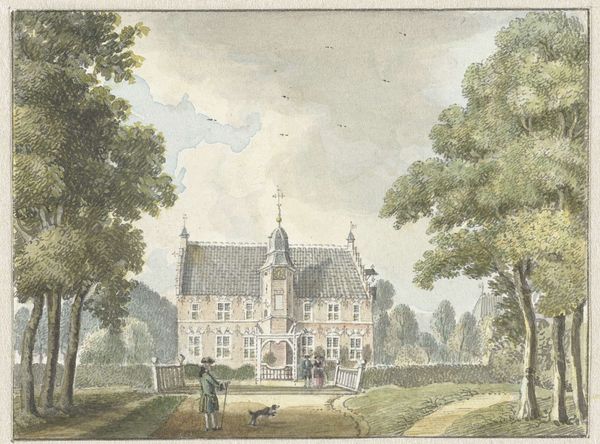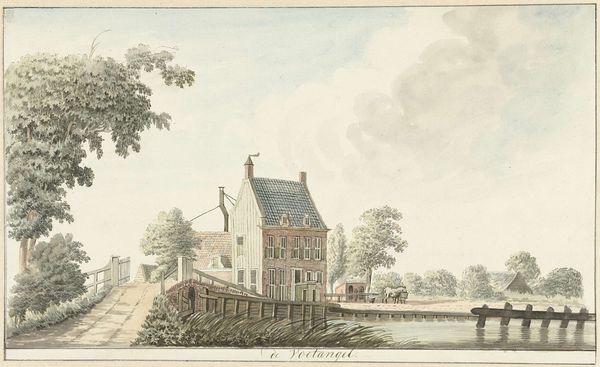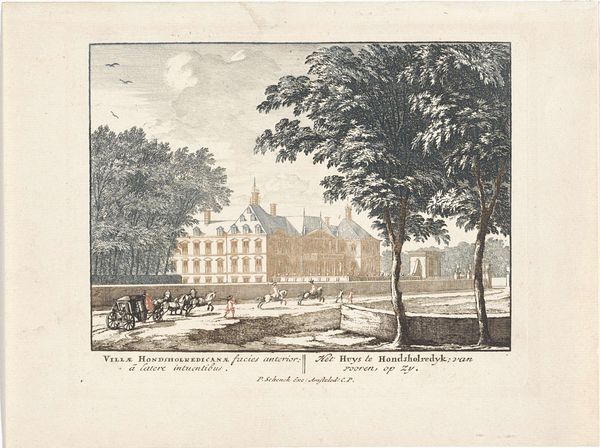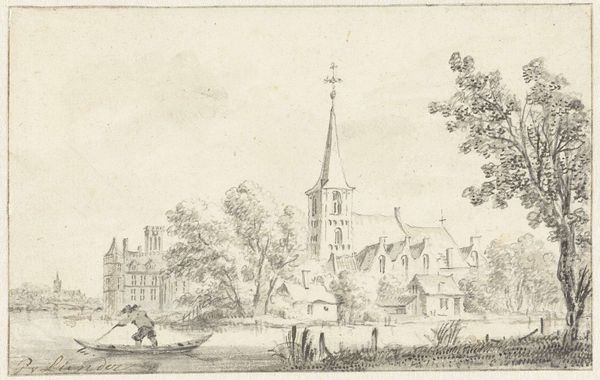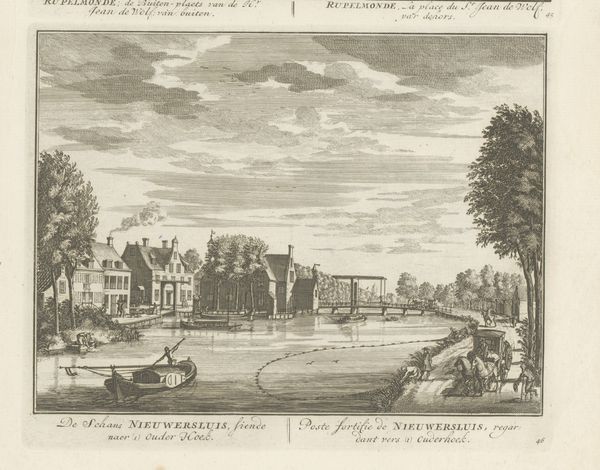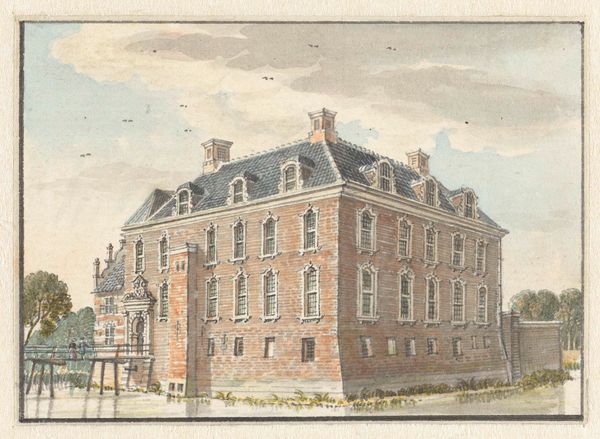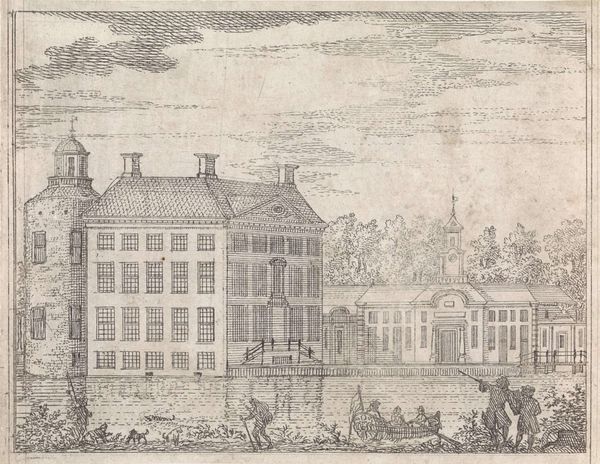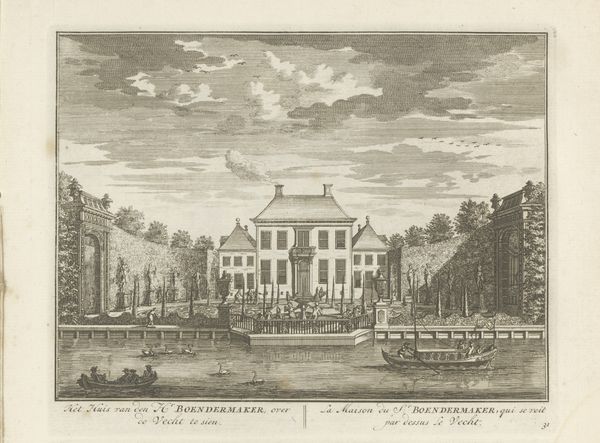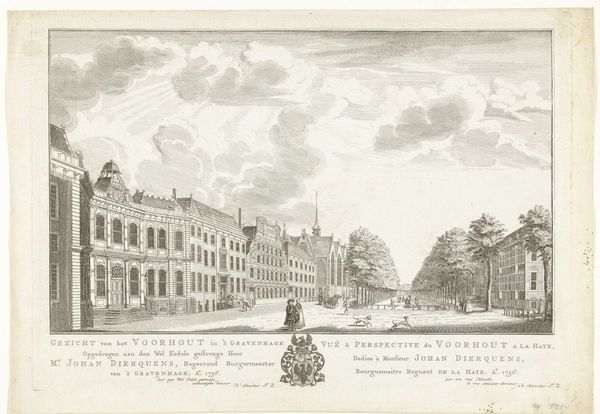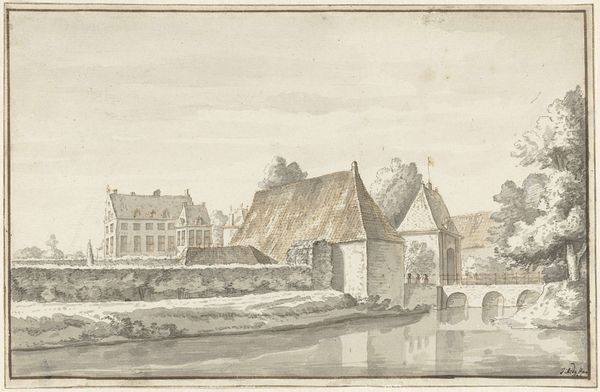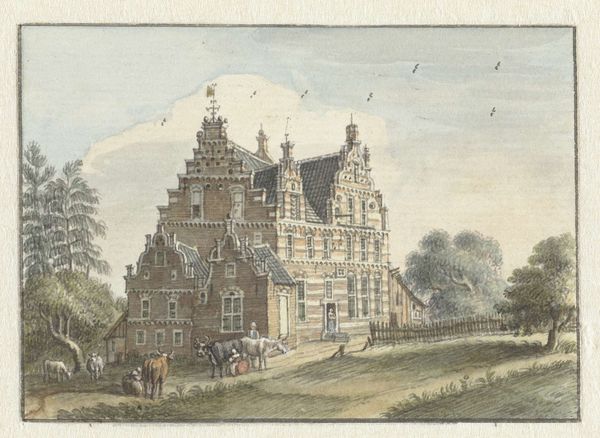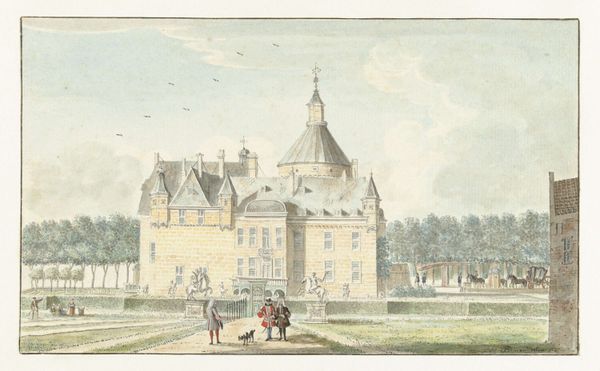
painting, watercolor, architecture
#
painting
#
landscape
#
watercolor
#
cityscape
#
watercolour illustration
#
architecture
Dimensions: height 70 mm, width 99 mm
Copyright: Rijks Museum: Open Domain
Curator: It’s really captivating, isn’t it? Like stepping back into a more orderly world. Editor: Yes, there’s a real stillness, a pastoral almost, in this watercolor, 'Het Huis Rooderloo bij Ruurlo' crafted in 1743 by Jan de Beijer. What symbols speak to you in it? Curator: Well, first, the sheer architectural audacity! That house, Rooderloo, isn't merely a dwelling; it's practically screaming about power, permanence and aspiration through every calculated window pane and decorative flourish. I mean, did folks even live in those places, or did they just sort of parade around, acting out roles in a gilded stage set? Editor: Good question! Watercolors soften those displays, don't you think? De Beijer might have subtly undercut the imposing facade of the Rooderloo House. I read its detailed rendition of the architecture and its surroundings—almost documentarian!—as a claim that symbols don't exist outside of their material conditions. Curator: Maybe. Though even documentary impulses can't help but be imbued with subjective lenses, can they? What fascinates me is the very careful placement of the people. They’re small, almost afterthoughts, juxtaposed against this looming, majestic house, right? Does that mean they’re insignificant or is there some implied power dynamic happening? Editor: It’s fascinating how their insignificance, as you called it, paradoxically emphasizes the House's dominion, its control over the inhabitants’ lives, the landscape itself. Like how a tiny figure beside a towering skyscraper suggests a whole chain of industrialization. But maybe they are a mirror too, an understated hint that greatness depends upon mundane, often nameless, efforts and services. Curator: Hmm, that adds another layer. The architecture might appear to symbolize control and societal rank, but by painting it, by inviting people to simply observe it in this pastoral snapshot, de Beijer subtly humanizes the very concept of dominance, doesn't he? By presenting it as history, frozen in watercolor brushstrokes, and somehow less… rigid? Editor: Precisely. By setting this image free into circulation he effectively transformed the formidable Rooderloo estate from being just a mere monument into a site of contemplation. Curator: The way historical landscapes prompt reflection - isn't that part of their persistent magic? Editor: Definitely. In decoding its symbolic language, in our experience and discussions, its original meaning finds endless reinvention and fresh significance.
Comments
No comments
Be the first to comment and join the conversation on the ultimate creative platform.
